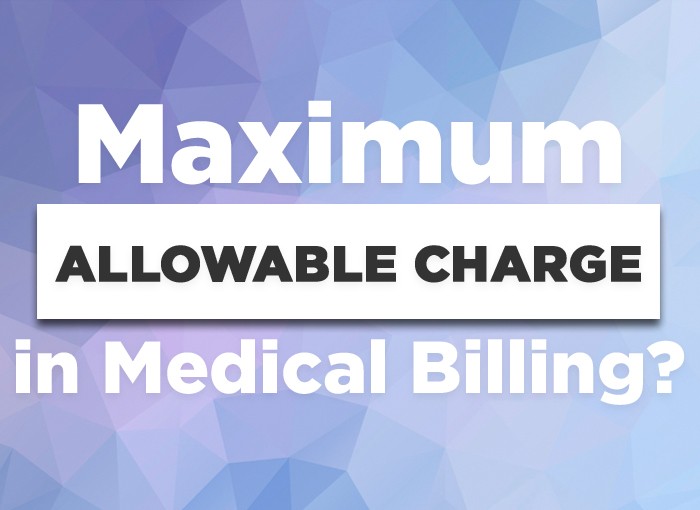What is the Maximum Allowable Charge in Medical Billing
The health care industry functions on cash inflow from patients and health care insurance payers. Without a good revenue cycle, the medical institutes won’t be able to invest in medical equipment and supplies, offer inpatient services, run labs to conduct various types of diagnostic tests, and pay doctors for their medical care services. To meet all the requirements hospitals join hands with government or private health care insurance payers for a maximum reimbursement of Medicare and other health insurance claims. However, every health insurance payer has a fixed allowable charge of reimbursement for various medical services. The health insurance payer will pay neither less nor more than the allowable charge. This is where the term maximum allowable charge in medical billing comes in.
Understanding Maximum Allowable Charge
In simple words, the maximum allowable charge refers to the maximum amount for reimbursement of a particular medical procedure as fixed or allowed by the health insurance payer. This amount is authorized by the insurance payer with a promise to pay some amount for the medical procedure on the patient’s behalf. The rest of the amount is cleared by the patient.
The amount of allowable charge may include:
- The amount negotiated with (participating) providers.
- The amount estimated by the law.
- The amount fixed as per the Fee Schedule.
Most of the time, the allowable charge fixed by the insurance payer is less than the amount estimated by the health care provider. However, the insurance payer is not obligated to pay more than the allowable charge. In such a case, the health care provider can’t charge the patient for the overdue amount. The patient is required to pay the copay or coinsurance amount as mentioned in the insurance card. Therefore, the health care provider is obligated to forget the remaining amount.
However, if the patient does not have any health care insurance plan then he/she is required to the estimated amount as charged by the physician. A maximum allowable charge is only applicable to patients with the health care insurance plan. Also, the patient should only visit the hospitals that have a partnership with the selected health care insurance network. For example, if you are a Medicare patient then you should only visit the hospitals where the Medicare plan is supported and followed.
Role of Maximum Allowable Charge in Medical Billing
Generating the superbill and filing the health care insurance claims tend to create s lot of confusion due to any discrepancy in the reimbursed payment. To avoid such confusion and eliminate discrepancy, both government and private health care insurance providers prefer to fix a particular amount for a particular medical procedure. Fixing the reimbursement amount obliges all the three parties—patient, health care provider, and the insurance provider to agree to a fixed amount at their part. This means the insurance payer and patient agree to pay the amount as co-payers and the health care provider agrees to accept the amount paid by the other two parties. Authorization of the maximum allowable charge for the performed procedure (as mentioned in the health care insurance plan) also gives the assurance of getting reimbursement without any denial or fraud.




